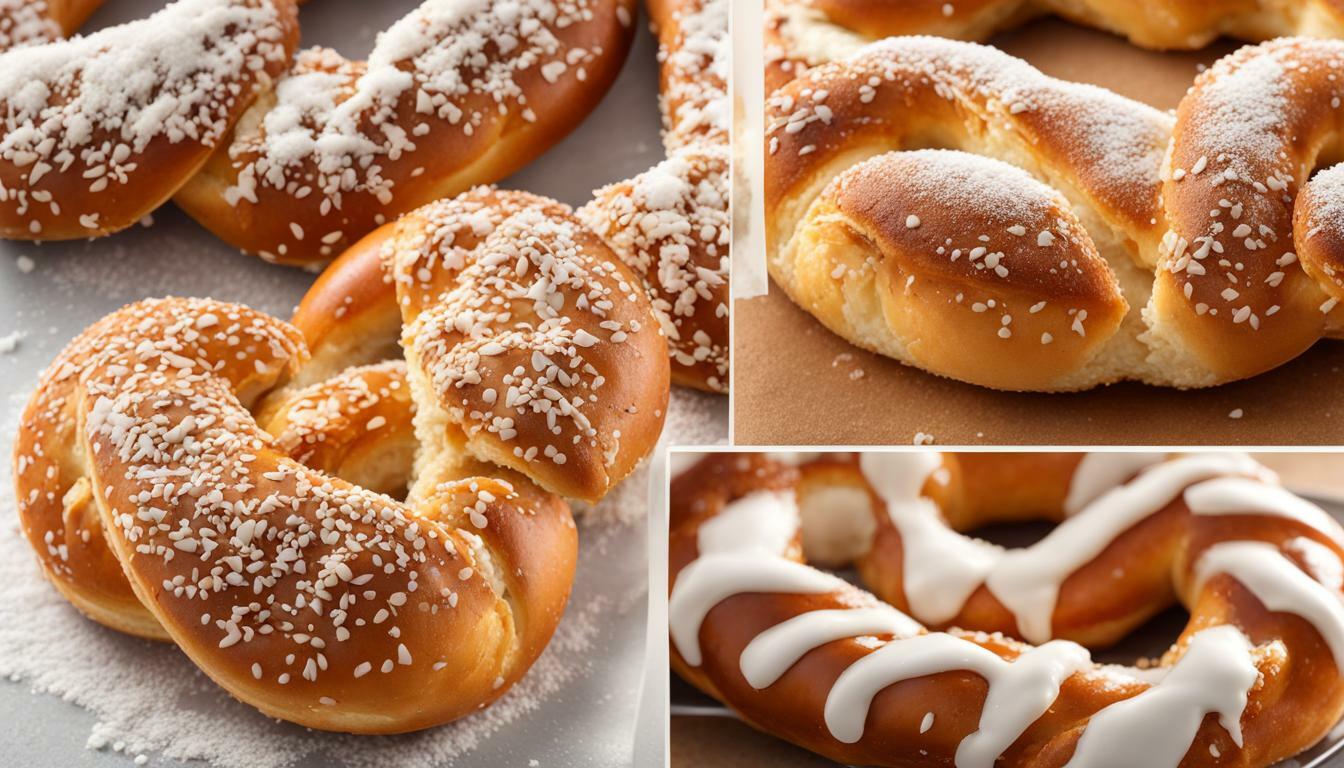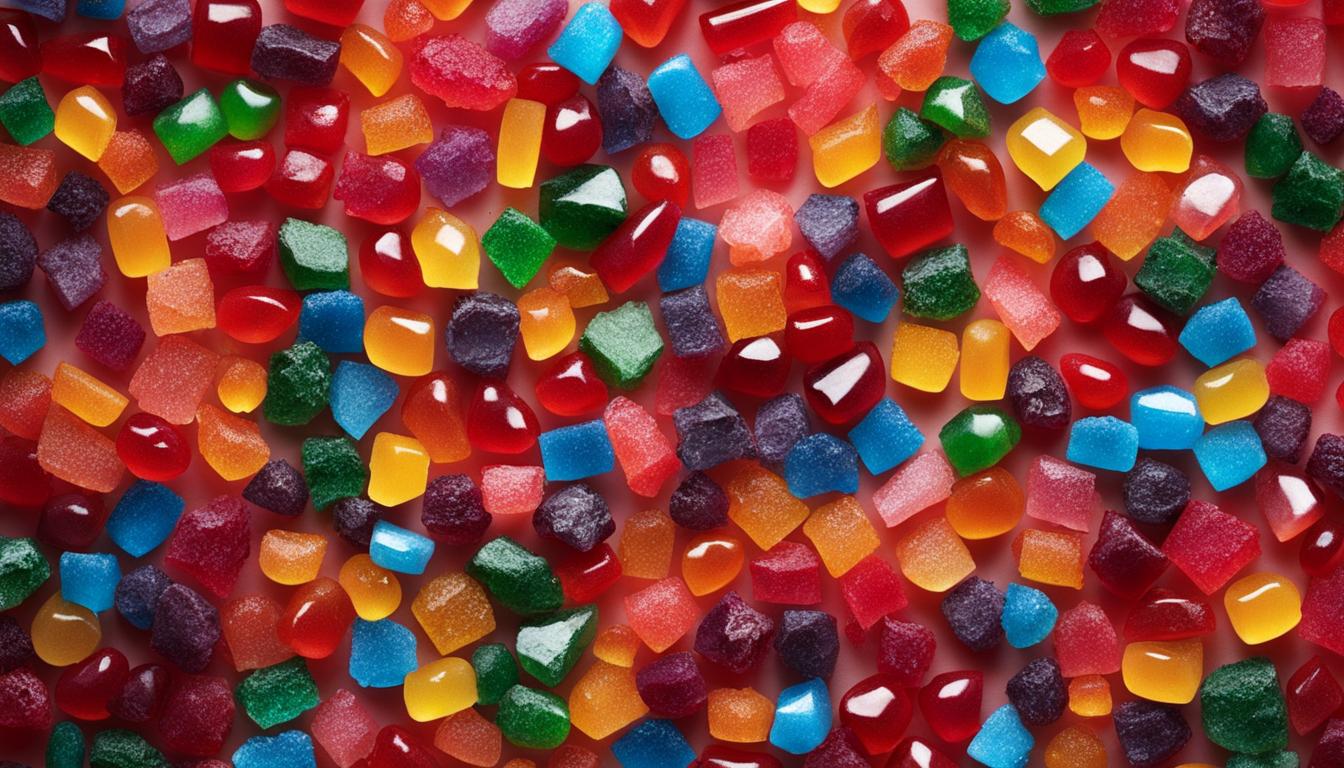There’s nothing quite like a warm, freshly baked pretzel to satisfy a craving for something salty and savory. But have you ever wondered about the differences between soft and hard pretzels? While both types share similar ingredients and origins, there are distinct characteristics that set them apart.
In this article, we’ll explore the unique qualities and histories of soft and hard pretzels, as well as provide a side-by-side comparison of their taste, texture, and preparation methods. Whether you’re a fan of the chewy soft pretzel or the crunchy hard pretzel, you’re sure to learn something new and interesting about these popular treats!
Key Takeaways
- Soft and hard pretzels share similar ingredients but have different preparation methods.
- Soft pretzels are known for their chewy texture and are often served with various toppings and dipping sauces.
- Hard pretzels are crispy and come in a variety of shapes and flavors.
- The origins and histories of pretzels are steeped in legend and tradition.
- Despite their differences, both soft and hard pretzels are delicious in their own way!
Soft Pretzels: A Delightful Twist
Soft pretzels are a delectable and savory snack that stands out for their unique texture and taste. When compared to hard pretzels, the differences are clear.
Texture and Flavor
Soft pretzels have a chewy consistency that sets them apart from the crispy and crunchy texture of hard pretzels. They are also larger and fluffier, with a warm and bread-like aroma. The taste is savory with a hint of sweetness that lends itself well to various dips and toppings.
Soft pretzels are traditionally served hot and fresh, which enhances their texture and flavor. They are often paired with mustard or cheese sauce, adding an extra layer of deliciousness.
Preparation Methods
Soft pretzels are made using a yeast dough, which is shaped into the distinctive knot-like shape before being boiled in water and baked. This process gives soft pretzels their unique texture and flavor.
Unlike hard pretzels, which have a longer shelf life and are often packaged for convenience, soft pretzels are best enjoyed fresh out of the oven.
Toppings and Dips
Soft pretzels are versatile and can be customized with a variety of toppings and dips. Some popular choices include salt, sesame seeds, cinnamon sugar, garlic, and jalapeno. Mustard and cheese sauce are classic dipping options, but other sauces such as honey mustard, marinara, and ranch are also becoming popular.
Overall, soft pretzels are a delicious and satisfying snack with a unique texture and flavor that stands out from hard pretzels. Whether enjoyed as a savory snack or as part of a meal, they continue to be a favorite among pretzel enthusiasts.
Hard Pretzels: A Crunchy Classic
While soft pretzels are known for their chewy texture, hard pretzels are beloved for their loud crunch. Unlike their soft counterparts, hard pretzels are baked until all moisture is removed, resulting in a crispy and dry texture. This makes them a popular snack food, often enjoyed with beer or other drinks.
The baking process for hard pretzels involves using alkaline water, which gives them their distinct brown color and also contributes to their texture. Hard pretzels come in many different shapes, including rods, sticks, and knots. They can also be flavored with various seasonings, such as garlic, onion, or cheese.
One of the most popular brands of hard pretzels is Snyder’s of Hanover, which first started making pretzels in 1909. Today, Snyder’s produces a wide variety of pretzels, including flavored options like honey mustard and hot buffalo wing. Another well-known brand is Bachman, whose Jax cheese curls have been a favorite snack in the northeastern United States for decades.
The Nutritional Difference
Hard pretzels are often lower in fat and calories than soft pretzels, due to their lack of oil and butter in the baking process. However, they are typically higher in sodium, which should be taken into consideration when consuming them as a snack.
Choosing between Soft and Hard Pretzels
While soft pretzels are typically seen as a snack food to enjoy on the go, hard pretzels are often a part of a snack spread at parties or gatherings. They are also a popular choice for dipping in various sauces or spreads, thanks to their sturdy texture. Ultimately, choosing between soft and hard pretzels comes down to personal preference and taste.
The Origins and Histories of Pretzels
Pretzels, both soft and hard, have a fascinating history that dates back to medieval times. The exact origin of pretzels is unclear, but according to popular legend, they were invented by a monk in the 7th century. The monk created the pretzel shape, which is said to resemble the crossed arms of praying monks, as a reward for children who learned their prayers well.
Soft pretzels are believed to have originated in Germany during the 12th century. They were sold by street vendors and quickly became a popular snack. In the 18th century, German immigrants brought soft pretzels to America, where they gained popularity in cities such as Philadelphia and New York.
Hard pretzels, on the other hand, have a more recent history. They were invented in the late 1800s by Julius Sturgis in Lititz, Pennsylvania. Sturgis had been baking soft pretzels for years but accidentally left a batch in the oven for too long, resulting in the crunchy texture of hard pretzels. Hard pretzels were an instant hit and quickly became a favorite snack in America.
Soft vs Hard Pretzels Explained
While both types of pretzels have unique histories, they both continue to be enjoyed around the world today. Soft pretzels are typically eaten as a snack or as a meal accompaniment and can be found at various food outlets, including street vendors, restaurants, and sports stadiums. Hard pretzels, on the other hand, are often enjoyed as a snack or as a topping for soups and salads.
Soft and hard pretzels also differ in their textures. Soft pretzels are chewy and doughy, while hard pretzels are crunchy and brittle. Additionally, soft pretzels are often served warm and can be topped with various salts, spices, and even dipping sauces. Hard pretzels, on the other hand, are typically served at room temperature and often come in various flavors, such as salted, plain, or sweet.
Despite these differences, both soft and hard pretzels have become beloved snacks around the world. Whether you prefer the chewiness of soft pretzels or the crunchiness of hard pretzels, there’s no denying the unique flavors and textures that make pretzels a timeless snack.
Similarities and Differences: A Comparative Analysis
While both soft and hard pretzels share a common doughy base, there are distinct differences in taste, texture, and preparation methods that set them apart from each other. Here, we break down the key similarities and differences between these two beloved snacks.
Texture:
The most notable difference between soft and hard pretzels is their texture. Soft pretzels have a chewy consistency that comes from being boiled in water before baking. This process also gives them a shiny, slightly crispy exterior. Hard pretzels, on the other hand, are baked twice, which gives them a crunchy texture that is perfect for munching.
Taste:
Soft pretzels have a mild flavor that is slightly doughy and salty. They are often enjoyed with a variety of toppings such as mustard, cheese, or cinnamon sugar. Hard pretzels, by contrast, come in a variety of flavors, from traditional salted to sweet and spicy. They can be enjoyed on their own or used as a base for dips and spreads.
Preparation Methods:
Soft pretzels are made by mixing dough, shaping it into the signature pretzel shape, boiling it in water, and then baking it. Hard pretzels, on the other hand, are made by mixing dough, shaping it into various shapes, and then baking it twice at high heat to achieve the perfect crunch.
Preferred Consumption Occasions:
Soft pretzels are often associated with sporting events, fairs, and carnivals. They are a popular snack that can be enjoyed on-the-go. Hard pretzels, on the other hand, are a staple snack food that can be enjoyed any time of day. They are often found in snack mixes or served as a side dish with soups and sandwiches.
Overall, the choice between soft and hard pretzels comes down to personal preference. Some prefer the chewy texture and mild flavor of soft pretzels, while others enjoy the satisfying crunch of hard pretzels. Whatever your preference, one thing is for certain – both soft and hard pretzels are delicious and satisfying snacks that everyone can enjoy.
Conclusion
As we’ve explored in this article, there are distinct differences between soft and hard pretzels. Soft pretzels are known for their chewy texture and flexibility, while hard pretzels offer a satisfying crunch.
Regardless of personal preference, both soft and hard pretzels have a rich history and cultural significance. From the streets of Philadelphia to the beer halls of Germany, pretzels have been enjoyed for centuries.
Whether you’re a fan of the traditional salted hard pretzel or the trendy flavored soft pretzel, there’s something for everyone. So, the next time you’re craving a snack, consider trying both varieties and appreciate the unique qualities of each.
Remember, the difference between soft and hard pretzels is just one example of the diverse range of snacks and foods available to us. So, keep exploring and discovering all the delicious options out there!
FAQ
Q: What is the difference between soft and hard pretzels?
A: Soft pretzels are known for their chewy texture and are typically larger in size. They are often served warm and can be topped with various flavors such as cheese or mustard. Hard pretzels, on the other hand, are crisp and crunchy. They are usually smaller and come in different shapes. Hard pretzels are often enjoyed as a snack on their own.
Q: How are soft pretzels prepared?
A: Soft pretzels are made from a dough that is boiled in a baking soda solution before being baked. This cooking method gives them their distinctive texture and flavor. After baking, soft pretzels are often brushed with butter and sprinkled with salt or other toppings.
Q: What are some common toppings for soft pretzels?
A: Soft pretzels can be enjoyed plain or with a variety of toppings. Some popular options include melted cheese, mustard, cinnamon sugar, or even chocolate. It ultimately depends on personal preference and the desired flavor profile.
Q: How are hard pretzels made?
A: Hard pretzels are made from a similar dough as soft pretzels, but they are baked for a longer period of time and at a higher temperature. This results in the crispy and crunchy texture that hard pretzels are known for.
Q: What flavors are available for hard pretzels?
A: Hard pretzels come in a variety of flavors, ranging from classic salted to sweet options like honey mustard or cinnamon sugar. Some brands also offer flavored varieties such as jalapeno or sour cream and onion.
 Skip to main content
Skip to main content


